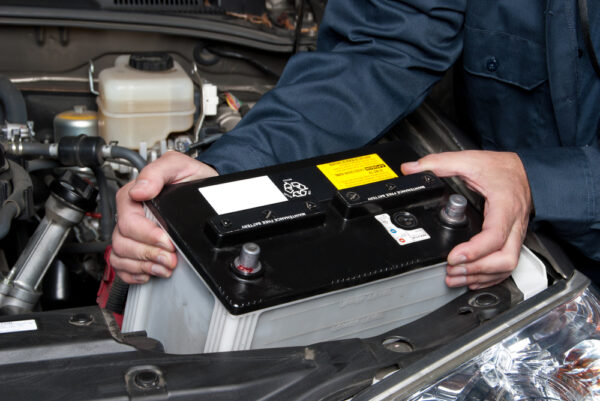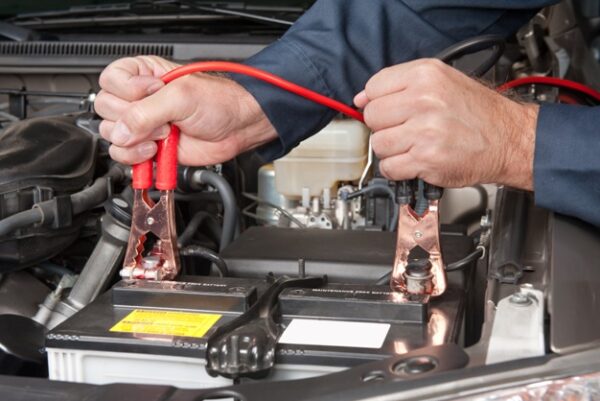


Health Safety
Guide to Health and Safety

Introduction
The handling and proper use of lead-acid batteries is not hazardous provided appropriate facilities are available and operators, having been instructed, are adequately supervised and take reasonable care. The purpose of this is: To indicate the potential hazards that may arise To outline the precautions to be taken to minimize such hazards To indicate the action to be taken in the event of an accident or emergency situation.

Disposal
Batteries, battery cases, battery acid, lead and lead compounds must not be burned but must be disposed of in accordance with appropriate legislation and local waste disposal authority rules and regulations.

Fire
Since batteries contain combustible materials the local fire authority should be consulted where a quantity of batteries are stored together.

General
Familiarize yourself with the location of your health centre and how to contact your works nurse, first aid or appointed person. Remember to report any accident involving personal injury in your official accident book. Any additional information, including battery labeling, that is provided to cover specific battery types and applications must be used in conjunction with this guide.
Sulphuric Acid Electrical Energy Emission of Gases
Batteries contain sulphuric acid (dry charged batteries prior to filling excluded), which may leak for a number of reasons and may be given off as droplets and/or fine mist during charging.
Nature of the Hazard
Battery acid is a poisonous and corrosive liquid, which will cause burns and irritation to skin and eyes and could damage clothing.
Precautions
Always keep batteries upright and handle them with care. Do not over fill batteries. Always charge in a well-ventilated area. Always use eye protection and protective clothing where there is any risk of splashing.Always keep batteries away from children.
Accident or Emergency Action/Treatment
Skin Contact – Immediately drench the affected area with clean water and remove any contaminated clothing. If the soreness or irritation persists seek medical advice. Eye Contact – Immediately wash out the eyes with clean water for at least 10 minutes and seek prompt medical attention. Spillage – Small spillages can be dealt with simply swilling away with plenty of water. Disposal – Suitable acid resistant, labelled containers should be used. See Disposal section to learn more.
Storage and Maintenance

Correct Storage
The handling and proper use of lead-acid batteries is not hazardous provided appropriate facilities are available and operators, having been instructed, are adequately supervised and take reasonable care. The purpose of this is :
All batteries should be stored in a cool dry place and in an upright position (terminals in an upward position). This will prevent spillage of electrolyte. Battery stock should be rotated in a strict and specific manner : first in, first out,whether the product is wet or in any other form.
Manufacturing date codes should be shown on the product packaging as well as stamped on the batteries themselves. This will prove helpful in accomplishing product rotation. One of the greatest problems with battery replacement is not following the procedure of first-in, first-out, and not balancing inventories with battery type demand.
Batteries stored for long periods of time without being charged will suffer from grid corrosion and plates will become sulphated. This leads to a loss of electrical capacity. High temperature storage will accelerate auto-discharge i.e. the higher the temperature of the surrounding environment the higher the internal losses in the battery.
When batteries are stored incorrectly they begin to lose their electrical charge, and eventually will become completely discharged.
Store batteries on wooden or plastic pallets when using steel shelving for storage, as this will provide added insulation. Make sure the storage area is dry and well ventilated and out of direct sunlight. Try to store batteries of the same type with the same date codes on the same shelf.
The oldest batteries of the same type should be positioned at the front of the shelf.

Maintenance
The cells indicate a gradual reduction of electrolyte level after the battery has been in use for a period of time, due to the loss of water in the electrolyte.
This is normal as electrolysis, or the decomposition of water ( H20 ) frees the hydrogen and oxygen gases as a result of the charge current. Cells also lose water due to natural evaporation.
The loss of water should be replaced with distilled or approved battery water to maintain the electrolyte at the recommended level. By doing this, and maintaining the level above the plates, you will extend the life of your battery.
Battery terminals and cables tend to corrode. If there has been a spill or leakage of electrolyte it must be cleaned with a solution of sodium bicarbonate to neutralise the acid and prevent corrosion.
Periodic cleaning of the battery top, plus terminal clamps and terminals will prevent corrosion which can cause poor starting.
Cover all metallic parts with a thin layer of petroleum jelly to prevent corrosion. Check the correct functioning of the charge system at regular intervals. Also check for parasitic losses that constantly drain the battery.
Battery Removal and Installation Guide

A 10-step guide to installing and removing an automotive battery

Before removing the battery, note which terminal (+) or (-) is connected to the grounded cable. The grounded cable is connected to the main engine

Disconnect the grounded cable first to prevent sparks caused by short circuiting. Disconnect the other cable from terminal post and then removal the battery hold-downs

Inspect the battery tray, hold-downs, clamps and replace items which have been damaged by excessive corrosion. Use a wire brush to clean corrosion product from the battery tray and clamps.

Rinse all corrosion product from the tray, hold-downs, and cables. Rinse thoroughly with clean water.

Before installing, check the battery for a full state of charge with a hydrometer or battery tester. If the specific gravity readings are low the battery should be charged before installing. During the winter a full state charge is critical before the battery is installed to ensure the maximum starting power and protection against freezing of the electrolyte.

Using a post and clamp cleaner, clean both battery terminals and inside both cable clamps until they have bright mettalic shine. The cleaning ensures good electrical contact.

Carefully place the new battery in the tray making certain that the correct (+) or (-) terminal is in the proper position relative to the grounded cable. This procedure ensures correct polarity. Put the battery hold downs in place but do not tighten them at this point.

Connect the ungrounded cable first (the reverse of the procedure when removing the battery), then connect the grounded cable. Make sure that both cable connections to the terminals are tight. Coat the terminals and cable clamps with grease or petroleum jelly.

Tighten the hold down nuts, taking care not to over tighten them.
Most Common Causes of Battery Failure
Do not blame the battery for problems until a complete check of the system has been made Both the earth cable and live cable should be checked for continuity and the contact with the battery terminals must be clean and tight. If the battery cables are faulty due to wear and corrosion they will not be able to carry the necessary current and will not be able to operate the vehicle electrical system properly.

Life Expired
This slowly wears away the active material on the plates and together with the corrosion of the grid structure the battery capacity is gradually lost to the point where replacement is necessary.

Poor Maintenance
When vent plugs or filler plugs are removed the electrolyte must be clear with no brownish colour which indicates overcharging, or an old battery close the end of its useful operating life.
Note that acid should never be added to a battery as only the water content of the electrolyte is either evaporated or decomposed.

Overcharging or Insufficient Charging
Excessive or insufficient charging may cause serious problems to the battery.
This is also true for vehicle charging generator and alternator systems which must be set correctly. Bench charging can also do damage if the recommended instructions for the battery type are not strictly followed

Overcharging Promotes
Spilling of acid which reduces the electrolyte level and causes corrosion damage due to acid on the cables and posts, and surrounding parts of the battery compartment. Excessive water loss leading to “dry out” of the battery.

Undercharging Causes
The accumulation of lead deposit on the separators causing short circuits between the positive and negative plates. The battery to eventually become completely discharged.

Under Sizing Batteries
Battery under sizing will usually nullify any warranty claim.

Reasons For Discharge

Excessive Vibration
Severe vibrations shake the active materials from the plates which then accumulate at the bottom of the battery.Batteries must always be fastened firmly to the base, but should not be too tight, as to damage the cases or covers.

Hidden Electrical Leaks
This test could be useful in identifying parasitic discharges which can cause a battery to die.
With the vehicle OFF, disconnect the negative terminal from the battery and place a testing lamp between it and the negative disconnected terminal.
With the circuits OFF, the lamp should NOT light up.
If it does, this is a clear indication of an electrical leak in the vehicle that is discharging the battery.
Digital clocks and digital radios may illuminate the lamp faintly. If it is very bright, use an ammeter to measure the current which should not be higher than 0.5Amps.

Terminal Connection Test
Place the voltmeter terminals: one on the positive terminal of the battery and the other on the positive connection
If the voltage drop is higher than 0.5 volts, clean the unit and tighten the terminal.

Superficial Discharge Test
Take the digital voltmeter and place one of the terminals on a battery post and the other one in the damp area, if the voltage is above 0.2 volts this would indicate a current leak.

Rapid Charge Test
Charge the battery for 3 minutes at 30 to 40 Amps
Connect a voltmeter to the battery and observe the voltage during the charge procedure.
If the voltage reading is higher than 15.5 volts, the battery is over sulphated and will need to be replaced.
